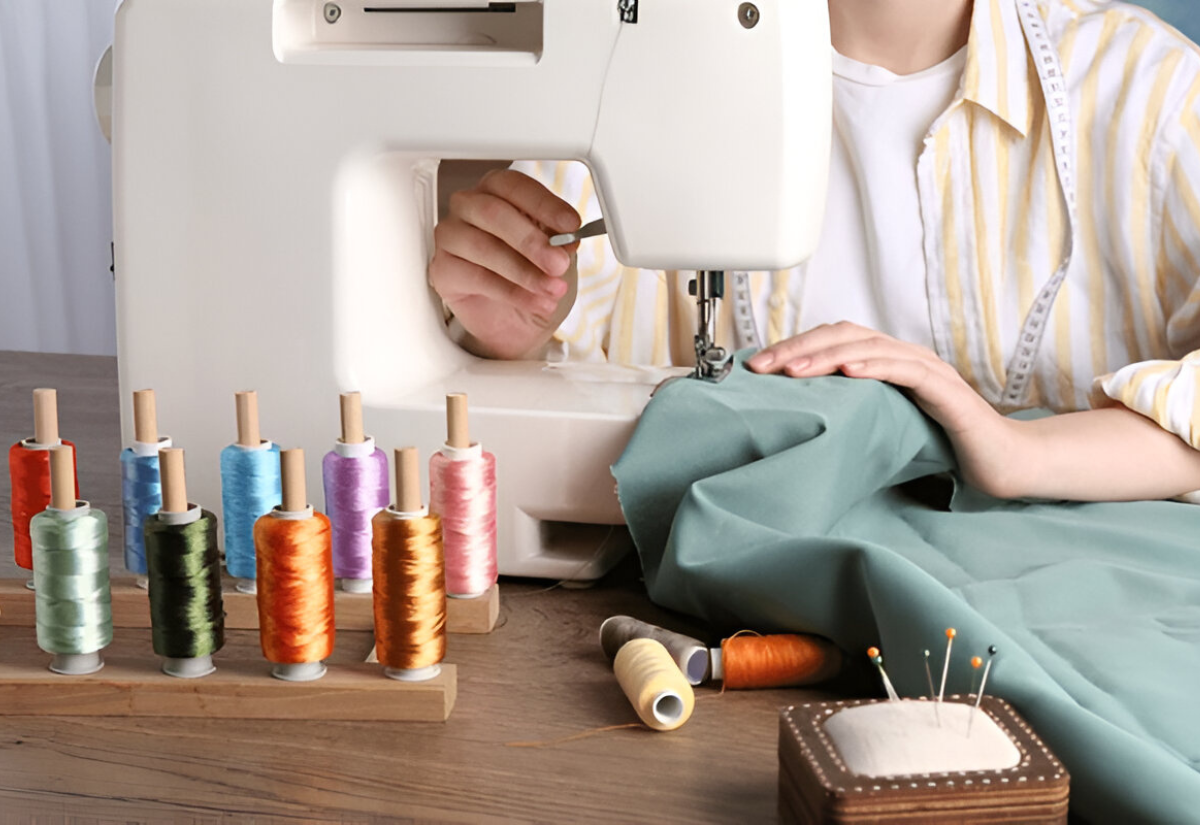Introduction
When working with fabric, the way seams are stitched together makes a big difference in both strength and appearance. These stitching methods, known as Nahttypen (stitch types), are the foundation of sewing and tailoring. Whether it’s everyday clothing, upholstery, or decorative projects, understanding the different seam types helps you choose the right method for the job. By learning how each Nahttyp works, you can achieve cleaner results, longer-lasting garments, and more creative design options.
What Are Nahttypen?
The word Nahttypen comes from German and simply means “types of seams” or “stitch types.” In sewing and textile work, seams are the lines where two or more pieces of fabric are joined together. The way this seam is stitched plays a huge role in how the finished piece looks, feels, and performs.
Different Nahttypen are designed for different purposes. Some are strong and durable, used for clothing that needs to handle everyday wear. Others are more decorative, adding visual detail and style. There are also seams that focus on flexibility, helping garments move comfortably with the body.
In short, Nahttypen are not just about holding fabric together — they define the quality, comfort, and appearance of the final product. Understanding them is the first step toward better sewing results, whether you’re a beginner learning the basics or a professional aiming for precision.
The Main Types of Nahttypen and Their Features
There are many ways to join fabric, but most Nahttypen fall into a few main categories. Each type has its own strengths, appearance, and best uses, making it important to understand their differences before starting a project.
Basic Seam Types
Basic seams are the foundation of sewing. These include simple stitches like the plain seam, which is the most common and straightforward way to connect two pieces of fabric. Other basic options, such as the French seam or flat-felled seam, provide extra strength and a clean finish. These stitches are often chosen when durability and neatness are the top priorities.
Decorative and Functional Seams
Not all seams are meant to stay hidden. Decorative seams are designed to add style, texture, or visual detail to clothing and fabric projects. Topstitching, for example, creates a visible line that can highlight design features while also reinforcing the seam. Functional seams like stretch seams or overlock stitches are equally important — they allow the fabric to move, stretch, or resist fraying, ensuring that the final piece not only looks good but also lasts longer.
Choosing the Right Nahttyp for Your Project
Not every seam works for every fabric or design. The success of a sewing project often depends on matching the right Nahttyp with the specific needs of the material and the purpose of the garment. For example, a lightweight fabric used in a blouse will require a very different seam type than heavy denim used for jeans.
Factors Like Material, Strength, and Flexibility
When selecting a seam, consider three main factors:
- Material: Delicate fabrics benefit from finer seams that don’t add bulk, while thicker fabrics often require stronger seams to hold them together.
- Strength: If the garment or item will be under stress, such as activewear or bags, a reinforced seam type ensures durability.
- Flexibility: Stretch fabrics need seams that move with them. Special stitches like overlock or zig-zag are designed to keep the fabric flexible without breaking the thread.
By thinking about these factors before you begin, you’ll avoid common sewing problems such as puckering, tearing, or seams that feel uncomfortable when worn.
Common Applications of Different Nahttypen
Each seam type has a role to play in everyday sewing and fabric work. By looking at how Nahttypen are used in real projects, it becomes easier to see why choosing the right stitch matters.
In clothing construction, plain seams are the backbone of shirts, dresses, and trousers. For garments that need extra polish, French seams give a smooth inside finish, while flat-felled seams are often found in jeans for added strength.
In home textiles and upholstery, stronger seam types like reinforced stitches or overlock seams are essential. They keep cushions, curtains, and furniture covers durable, especially when fabrics are thick and used daily.
For decorative projects and crafts, visible stitches such as topstitching or decorative embroidery seams add detail and personality. These types are common in quilting, handmade accessories, or even modern fashion pieces where the seam itself becomes a design element.
Benefits of Understanding and Using the Correct Nahttypen
Choosing the right seam type is more than a technical detail — it can transform the quality of any sewing project. When the correct Nahttyp is used, the finished product not only looks better but also lasts longer and feels more comfortable.
One of the biggest advantages is durability. Strong seams prevent garments from tearing or fraying, especially in areas under frequent stress like shoulders, waistlines, or upholstery edges. This makes clothes and fabric items more reliable for daily use.
Another key benefit is comfort. A poorly chosen seam can feel bulky, stiff, or irritating against the skin. By matching the seam type to the fabric, you ensure that clothing feels smooth and moves naturally with the wearer.
Finally, the right seam can greatly improve aesthetics. Decorative stitches highlight design features, while clean and neat seam finishes give even simple garments a professional look. Whether for fashion, home textiles, or crafts, mastering Nahttypen brings both function and beauty to your creations.
Tips for Working With Different Nahttypen
Getting the best results with different Nahttypen often comes down to technique, preparation, and the right tools. Even experienced sewers can run into problems if the wrong approach is used for a specific seam type.
Start by choosing the right needle and thread for your fabric. Heavy fabrics like denim need a stronger needle and thicker thread, while delicate fabrics require finer tools to avoid damage.
It’s also important to test your seam on a scrap piece of fabric before sewing the actual garment. This allows you to check tension, stitch length, and overall appearance, helping you avoid costly mistakes later.
For tricky seams like French seams or flat-felled seams, pressing each step with an iron makes a huge difference. Pressing keeps the fabric flat, ensures accuracy, and gives the seam a polished finish.
Modern Innovations and Trends in Nahttypen
Sewing has come a long way from being a purely manual craft. Modern technology and design trends have introduced new ways of creating and refining Nahttypen, making them more efficient, precise, and versatile.
One of the biggest changes comes from advanced sewing machines. Many models today include built-in programs that allow users to choose from a wide range of seam types at the push of a button. This has made decorative stitches, overlock seams, and reinforced seams more accessible, even for beginners.
In professional industries, computerized stitching systems have raised the standards for accuracy. These machines can produce consistent seam patterns at high speed, which is especially valuable in mass production for fashion and upholstery.
Trends in design have also shaped how Nahttypen are used. For example, visible seams as a style choice are becoming popular, with topstitching and contrast-colored threads adding a bold design element. On the other end, sustainable fashion has encouraged seam types that minimize waste and make garments easier to repair or recycle.
Overall, today’s innovations are not only about making sewing faster but also about blending functionality with creativity, allowing seam types to play both a practical and an artistic role in modern projects.
Conclusion
Understanding Nahttypen is one of the most valuable skills in sewing and fabric work. From the simplest plain seam to advanced decorative stitches, each type has a purpose that influences durability, comfort, and appearance. Choosing the right seam not only improves the quality of a project but also helps bring creative ideas to life.
Whether you are sewing clothing, home textiles, or decorative pieces, knowing how and when to use different seam types makes the process smoother and the results more professional. By combining traditional knowledge with modern innovations, Nahttypen remain a vital part of both everyday sewing and the evolving world of fashion and design.
FAQ
Q1: What are the most commonly used Nahttypen in sewing?
Some of the most common seam types include the plain seam, French seam, and flat-felled seam. Overlock and zig-zag stitches are also widely used to prevent fabric edges from fraying.
Q2: How do I know which Nahttyp is right for my fabric?
The best choice depends on the fabric’s weight, stretch, and purpose. Light fabrics often need finer seams, while heavy or stretch fabrics benefit from stronger or flexible stitch types.
Q3: Can Nahttypen be combined in one project?
Yes, many projects use a mix of seam types. For example, a garment might use plain seams for structure, decorative stitches for style, and overlock seams to finish raw edges neatly.
Q4: Are there modern or digital methods for creating precise Nahttypen?
Modern sewing machines often come with built-in seam options, while computerized systems in professional settings ensure high accuracy and consistency, making it easier to create precise stitch patterns.

